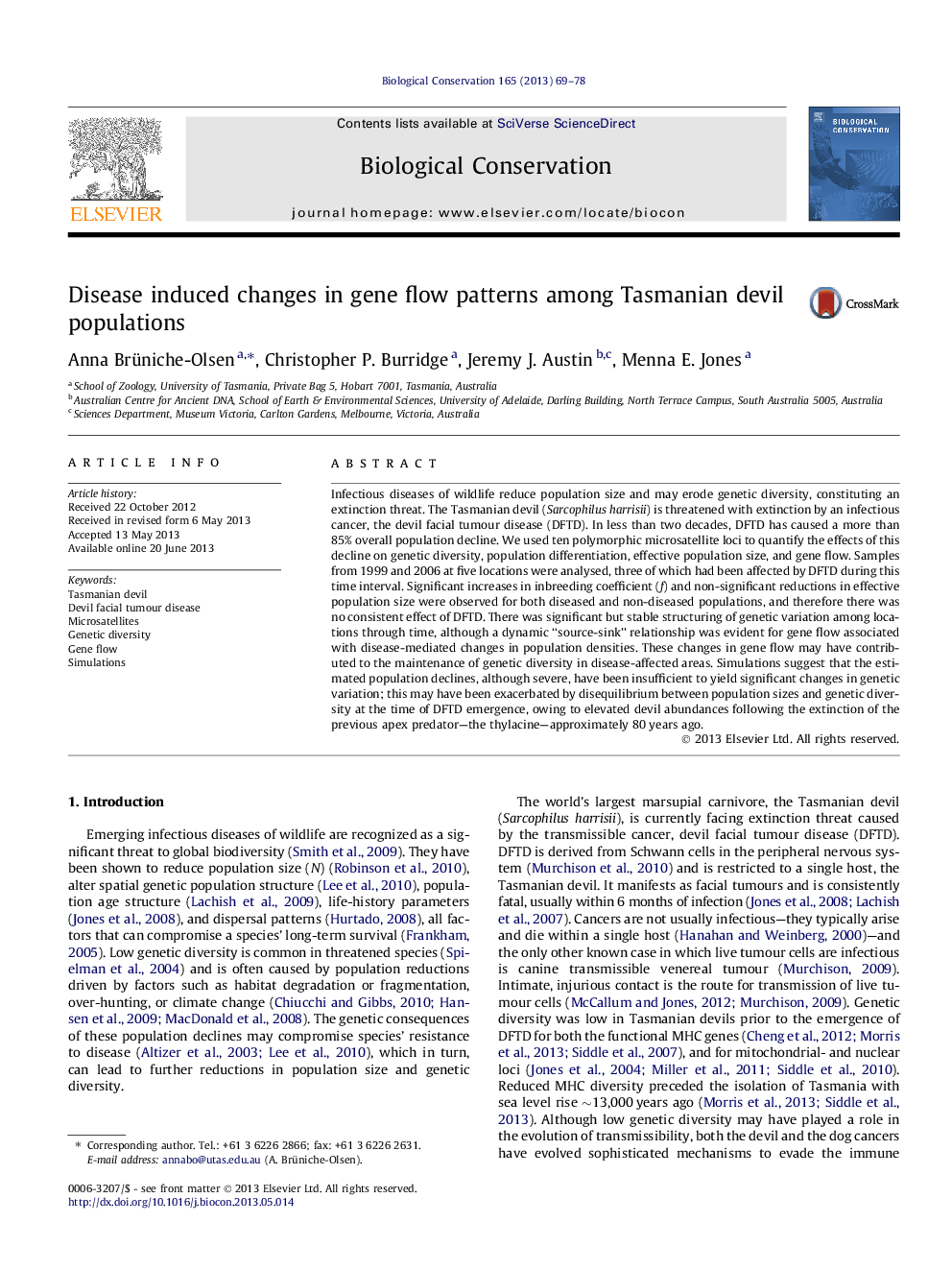| کد مقاله | کد نشریه | سال انتشار | مقاله انگلیسی | نسخه تمام متن |
|---|---|---|---|---|
| 6300851 | 1617936 | 2013 | 10 صفحه PDF | دانلود رایگان |
عنوان انگلیسی مقاله ISI
Disease induced changes in gene flow patterns among Tasmanian devil populations
ترجمه فارسی عنوان
بیماری های ناشی از تغییرات در الگوهای جریان ژنی در میان جمعیت شیطان تاسمانیان
دانلود مقاله + سفارش ترجمه
دانلود مقاله ISI انگلیسی
رایگان برای ایرانیان
کلمات کلیدی
شیطان تاسمانی، بیماری تومور صورت شیطان، میکروسستاتیت، تنوع ژنتیکی، جریان ژن، شبیه سازی،
موضوعات مرتبط
علوم زیستی و بیوفناوری
علوم کشاورزی و بیولوژیک
بوم شناسی، تکامل، رفتار و سامانه شناسی
چکیده انگلیسی
Infectious diseases of wildlife reduce population size and may erode genetic diversity, constituting an extinction threat. The Tasmanian devil (Sarcophilus harrisii) is threatened with extinction by an infectious cancer, the devil facial tumour disease (DFTD). In less than two decades, DFTD has caused a more than 85% overall population decline. We used ten polymorphic microsatellite loci to quantify the effects of this decline on genetic diversity, population differentiation, effective population size, and gene flow. Samples from 1999 and 2006 at five locations were analysed, three of which had been affected by DFTD during this time interval. Significant increases in inbreeding coefficient (f) and non-significant reductions in effective population size were observed for both diseased and non-diseased populations, and therefore there was no consistent effect of DFTD. There was significant but stable structuring of genetic variation among locations through time, although a dynamic “source-sink” relationship was evident for gene flow associated with disease-mediated changes in population densities. These changes in gene flow may have contributed to the maintenance of genetic diversity in disease-affected areas. Simulations suggest that the estimated population declines, although severe, have been insufficient to yield significant changes in genetic variation; this may have been exacerbated by disequilibrium between population sizes and genetic diversity at the time of DFTD emergence, owing to elevated devil abundances following the extinction of the previous apex predator-the thylacine-approximately 80Â years ago.
ناشر
Database: Elsevier - ScienceDirect (ساینس دایرکت)
Journal: Biological Conservation - Volume 165, September 2013, Pages 69-78
Journal: Biological Conservation - Volume 165, September 2013, Pages 69-78
نویسندگان
Anna Brüniche-Olsen, Christopher P. Burridge, Jeremy J. Austin, Menna E. Jones,
